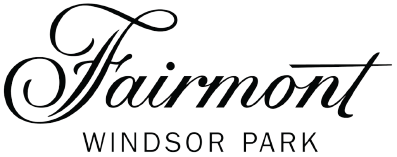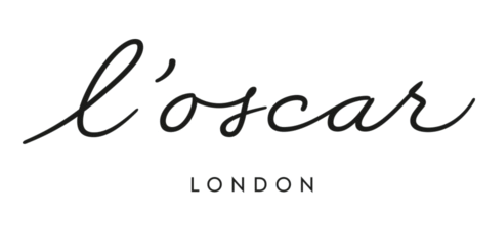
When evaluating opportunities to invest your hard-earned capital, it is essential to conduct thorough research and seek out the best advice and information possible. Art investments are no exception, although making money from art may be easier than you think.
Even if you don’t have a comprehensive understanding of the art market, by identifying and choosing a renowned commercial art gallery, you too can benefit from contemporary art.
If you’re looking to get started as an art investor, we can help. Read on and download our art investment guide, which includes why you should be investing in art, why the contemporary art market is the most lucrative art market and the difference between an emerging artist and a blue-chip artist.
Where to Look for Art Investments
One of the main things you need to know about art investments is where to look for quality art to invest in. There are two markets for art: the primary market and the secondary market.
The primary market refers to art purchased for the first time directly from the artist or an art gallery, whereas the secondary market refers to art that is being re-sold. Essentially, any art that has been sold more than once is secondary. Below, we explore the various art galleries, art auctions, and art fairs.
Art Galleries
One of the main places that investors find art to buy is an art gallery. Commercial art galleries not only offer you the opportunity to view a wide range of different works of art but also to purchase them, an opportunity not offered by public art galleries.
Many prestigious art galleries are primary markets as they display works of art that haven’t been sold before. At an art gallery, you can access information regarding the artist and the artwork, which can help you determine whether the piece is a worthwhile investment.
There are approximately 1,800 commercial art galleries in the UK, so you won’t have far to go to find artwork to buy. If you live in the London area, there are a range of art galleries that offer you a chance to invest in quality art pieces, such as our very own Grove Gallery.
We are home to an impartial art advisory service, meaning we can use our wealth of experience and industry knowledge to source primary and secondary market pieces for you to invest in.
Auctions
In most cases, auctions are secondary markets, meaning they sell pieces of art that somebody has previously purchased and owned. You can find both online fine art auctions and in-person art auctions, although many buyers prefer to go to a physical art auction house so they can see the pieces up close.
One thing you should know about art auctions is that you will be required to pay more than just the price tag of the piece. You’ll also pay the buyer’s premium, which can vary depending on the auction, the seller, and the painting. However, it can be up to 30% of the hammer price in some cases.
Art Fairs
Art fairs can be a great place to identify up-and-coming artists and purchase pieces of art directly from the artist. However, if you don’t have much experience when it comes to fine art investment, it’s important to conduct thorough research or liaise with an art advisor.
Although many prestigious art fairs will sell art that will increase in value, there is no guarantee. There is also a risk that the art could decrease in value, leaving you out of pocket.
Many local art fairs will display pieces from lesser-known artists, and although they may not see a huge increase in value, you can find details that look great.
Types of Art to Invest In
Now that you have an understanding of the different places you can source art to invest in, it’s time to learn the critical types of artworks you can invest in to build your art investment portfolio. This is one of the most important decisions you can make and can determine the success of your portfolio.
Old Masters
Old Masters artwork refers to art from the world’s most prominent artists, such as Da Vinci, Michelangelo, and Rembrandt. Their artwork carries not only a large price tag but also prestige.
You have probably seen Old Masters artwork in national art galleries and museums or studied it at school in art or history classes. Old Masters are ultimately the most valuable and limited-edition pieces of art in the world.
Blue Chip Art
The term ‘blue chip’ derives from blue chip stocks—huge companies with a long track record of profitability.
Blue-chip artwork refers to art by artists that are prominent in the industry and widely recognised. This can include artwork by Banksy, Warhol, and Basquiat. Their art has a lasting cultural appeal and appreciation.
Emerging Artists
The contemporary art market is where you will find new artists who have yet to gain popularity and haven’t broken into the blue-chip market yet. Because of this, new artists will often produce high-quality paintings and sell their art for a lower price tag, which offers individuals a great investment opportunity.
Although it’s entirely possible for a novice investor to stumble upon a new artist and make a profit from their work, this form of art investment generally requires art investment experience and guidance from a professional.
Art Investment at Grove Gallery
At Grove Gallery, we can show you how to generate, on average, between 8% and 12% of contemporary art each year. We can guide you through the entire process and share our expertise to ultimately increase the chance of investment success by selling your art for the highest price.
Not only will we inform you how you can use art as a safe-haven asset and a great way to diversify and bolster your savings, but we will also help you identify the right investment-grade artwork.
Our support and advice don’t end after you have bought a work of art; we also guide you through the portfolio creation process and assist with selling your art, which can help you make a serious profit.
Visit our art gallery in London today, or give our experts a call at 020 8103 4905. We’ll be happy to assist you with any queries you may have regarding art investing.






